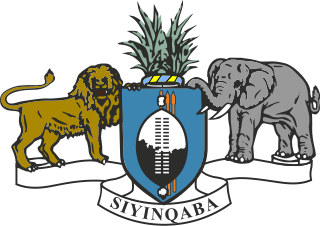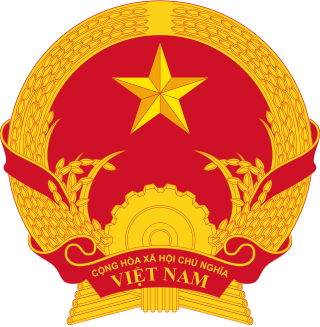Related Research Articles

Elections in the Bahamas take place in the framework of a parliamentary democracy. Since independence, voter turnout has been generally high in national elections, with a low of 87.9% in 1987 and a high of 98.5% in 1997. The current Prime Minister is The Hon. Philip Davis.

Parliamentary elections were held in Russia on 12 December 1993. They were the first parliamentary elections in post-Soviet Russia and the only time to the Federation Council, with future members appointed by provincial legislatures and governors.
Early parliamentary elections were held in Iceland on 25 and 26 October 1959. Following the electoral reforms made after the June elections, the Independence Party won 16 of the 40 seats in the Lower House of the Althing.

Early general elections were held in Jamaica on 15 December 1983. The elections were effectively ended as a contest when the main opposition party, the People's National Party, boycotted the election to protest the refusal of the ruling Jamaican Labour Party to update the electoral roll amid allegations of voter fraud.
Parliamentary elections were held in North Korea on 25 November 1967. Only one candidate was presented in each constituency, all of which were selected by the Workers' Party of Korea, although some ran under the banner of other parties or state organisations to give the illusion of democracy. Voter turnout was reported to be 100%, with 100% voting in favour of the candidates presented.

General elections were held in Swaziland on 19 and 20 April 1967 to elect members of the House of Assembly. The result was a second successive victory for the royalist Imbokodvo National Movement, which won 79.4% of the vote and all 24 seats.

National Assembly elections were held in areas controlled by North Vietnam on 6 January 1946. Held under the 1946 constitution, they resulted in a victory for the Communist-led Việt Minh, which won 182 of the 302 seats, although the distribution of seats between parties had been decided before the elections. The ballot was not secret and ballot papers were filled out in the presence of aides who were "to help comrades who had difficulty in making out their ballots."
Presidential elections were held in South Vietnam on 3 September 1967. The result was a victory for Nguyễn Văn Thiệu, who received 35% of the vote. Voter turnout was 83%. The elections are widely considered to have been fraudulent.
Parliamentary elections were held in South Vietnam on 22 October 1967. Only a few candidates were affiliated with political parties. Voter turnout was reported to be 73%, with 4,270,794 of the 5,853,251 registered voters voting.
Senate elections were held in South Vietnam on 30 August 1970. The election was contested by a total of 16 lists, of which the three highest polling would be elected and receive ten seats each. Each voter had three votes, with the winning list receiving 1,149,597 votes (12%), whilst the third-placed list won 882,274 votes (9%). Voter turnout was reported to be 65%.
Senate elections were held in South Vietnam on 26 August 1973. The election was contested by a total of four lists, of which two would be elected and receive 15 seats each. Each voter had two votes. Voter turnout was reported to be 92.7%.
Elections to the House of Representatives were held in South Vietnam on 29 August 1971. Only a few candidates were affiliated with political parties. They were the final elections held in South Vietnam, as its government was overthrown by the North in 1975 and unified with the North in 1976.

Parliamentary elections were held in Vietnam on 19 April 1987, with a second round in eleven constituencies on 3 May. The Vietnamese Fatherland Front was the only party to contest the election, and nominated 829 candidates for the 496 seats. Voter turnout was reported to be 98.8% in the first round.

A referendum on the status of the island was held in Puerto Rico on 23 July 1967. Voters were given the choice between being a Commonwealth, statehood or independence. The majority of voters voted for Commonwealth status.
General elections were held in Saint Vincent and the Grenadines on 19 May 1967, less than a year after the previous elections. The result was a victory for the Saint Vincent Labour Party, which won six of the nine seats. Voter turnout was 82.6%.
General elections were held in Bosnia and Herzegovina on 18 November 1990, with a second round of voting in the House of Peoples elections on 2 December. These were the final general elections to be held in Bosnia and Herzegovina while it was still a constituent republic of the SFR Yugoslavia.
General elections were held in Romania in June 1939. The Chamber of Deputies was elected on 1 June, whilst the Senate was elected a day later. They were the first since the introduction of the royal dictatorship of King Carol II under the 1938 constitution. Voters were presented with a single list from the National Renaissance Front, which had been the only legally permitted party in Romania since December.
A referendum on real estate was held in Switzerland on 2 July 1967. Voters were asked whether they approved of a popular initiative against real estate speculation. The proposal was rejected by a majority of voters and cantons.
Two referendums were held in Switzerland during 1918. The first was held on 2 June on introducing a direct federal tax, and was rejected by a majority of voters and cantons. The second was held on 13 October 1918 on introducing proportional representation for National Council elections, and was approved by a majority of voters and cantons. As a result, proportional representation was introduced in the 1919 elections.
Six referendums were held in Switzerland during 1938. The first four were held on 20 February; the first on amending articles 107 and 116 of the constitution to make Romansch an official language, which was approved by over 90% of voters and all cantons. The second was on a popular initiative "on urgent federal resolutions and the protection of people's rights" and was rejected by 85% of voters. The third was on a popular initiative on the private arms industry, and was also rejected by a wide margin, whilst the fourth was on a counter-proposal to the arms industry question, and was approved by voters. The fifth referendum was held on 3 July on the penal code, and was approved. The sixth and final referendum of the year was held on 27 November on a federal resolution on the transient order of the federal budget, and was approved by 72% of voters.
References
- ↑ Dieter Nohlen, Florian Grotz & Christof Hartmann (2001) Elections in Asia: A data handbook, Volume II, p331 ISBN 0-19-924959-8
- ↑ Nohlen et al., p337
- ↑ "Vietnam Public Administration Bulletin nr. 41 (Nov. 1967)" (PDF). US Agency for International Development. Retrieved 17 May 2016.